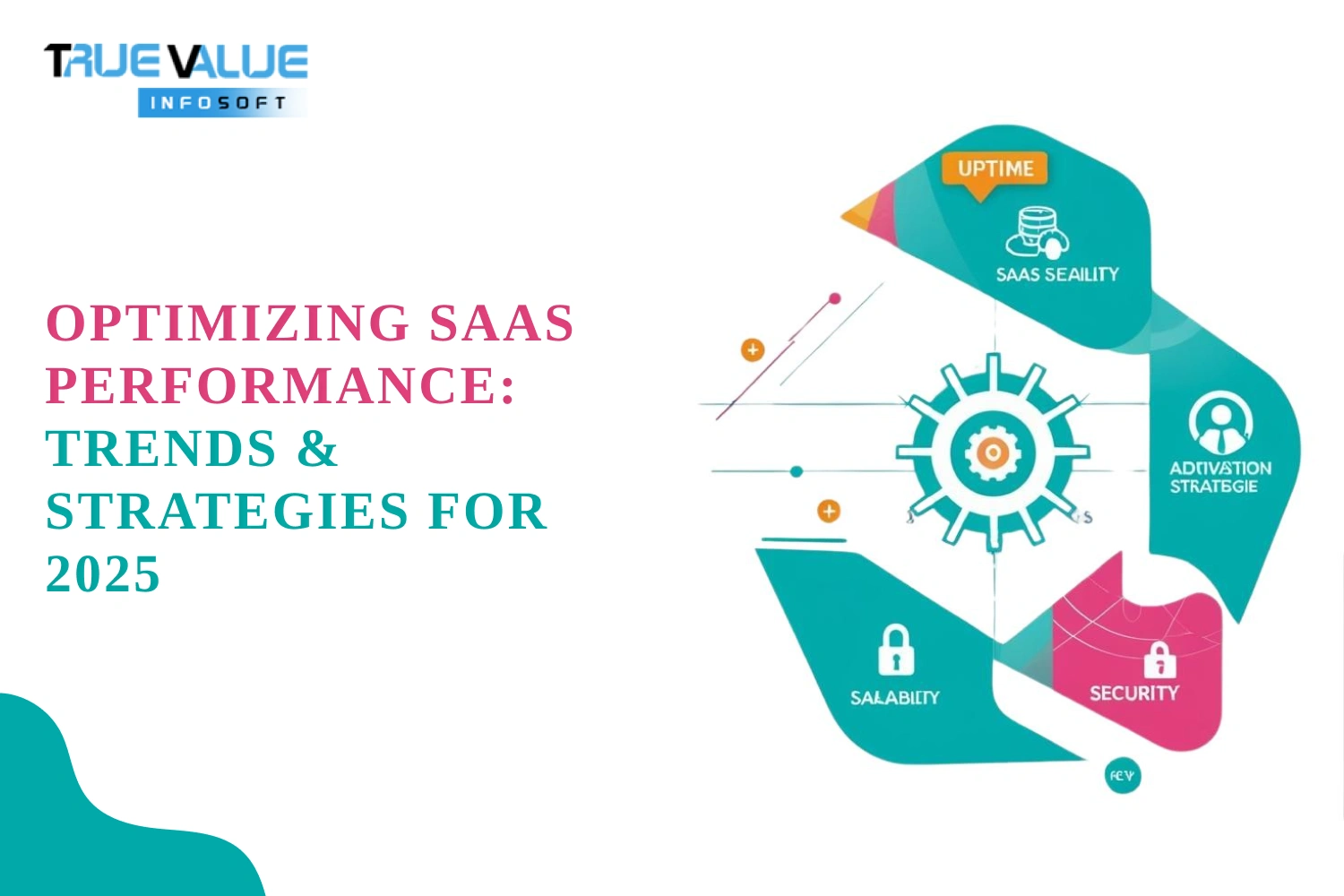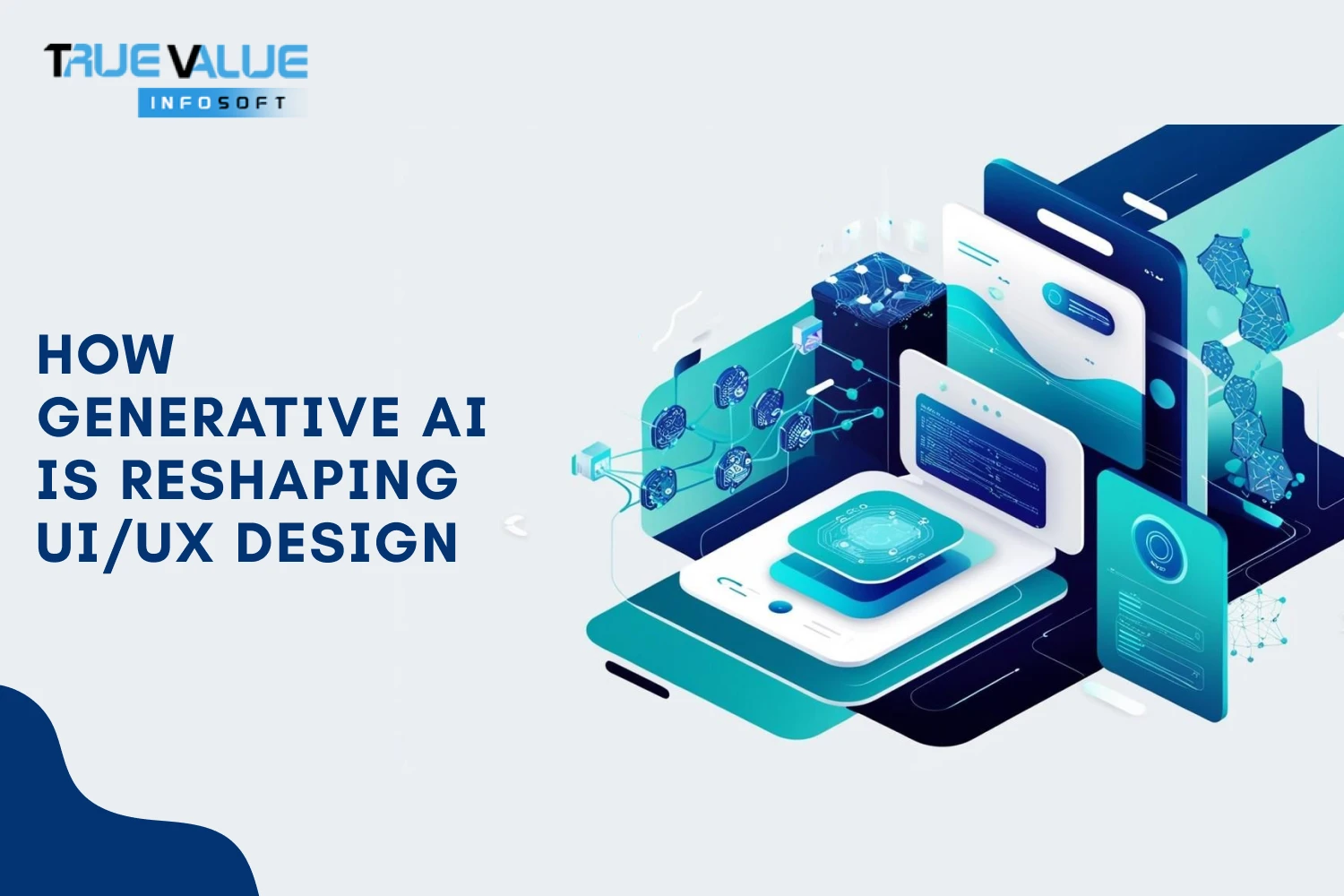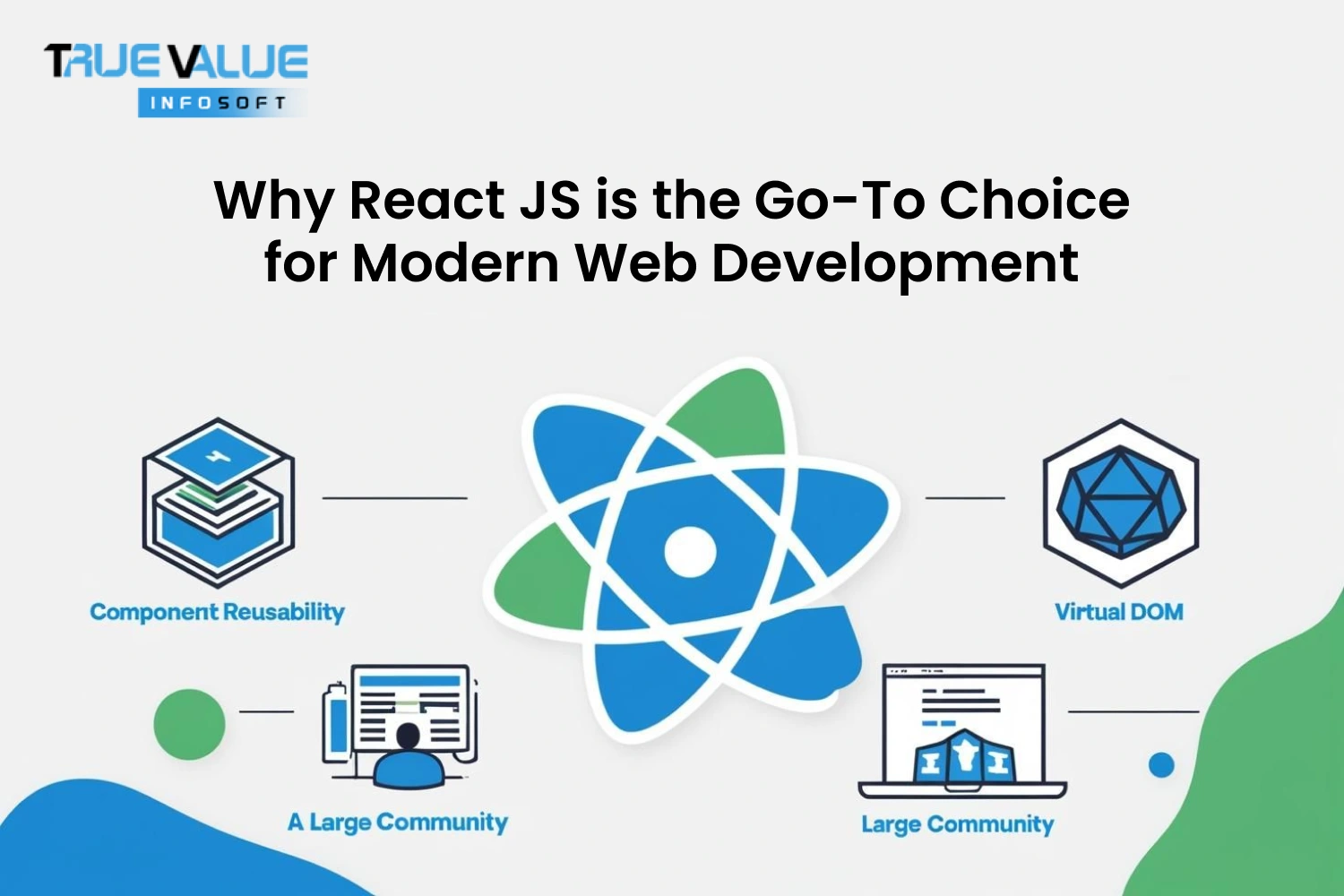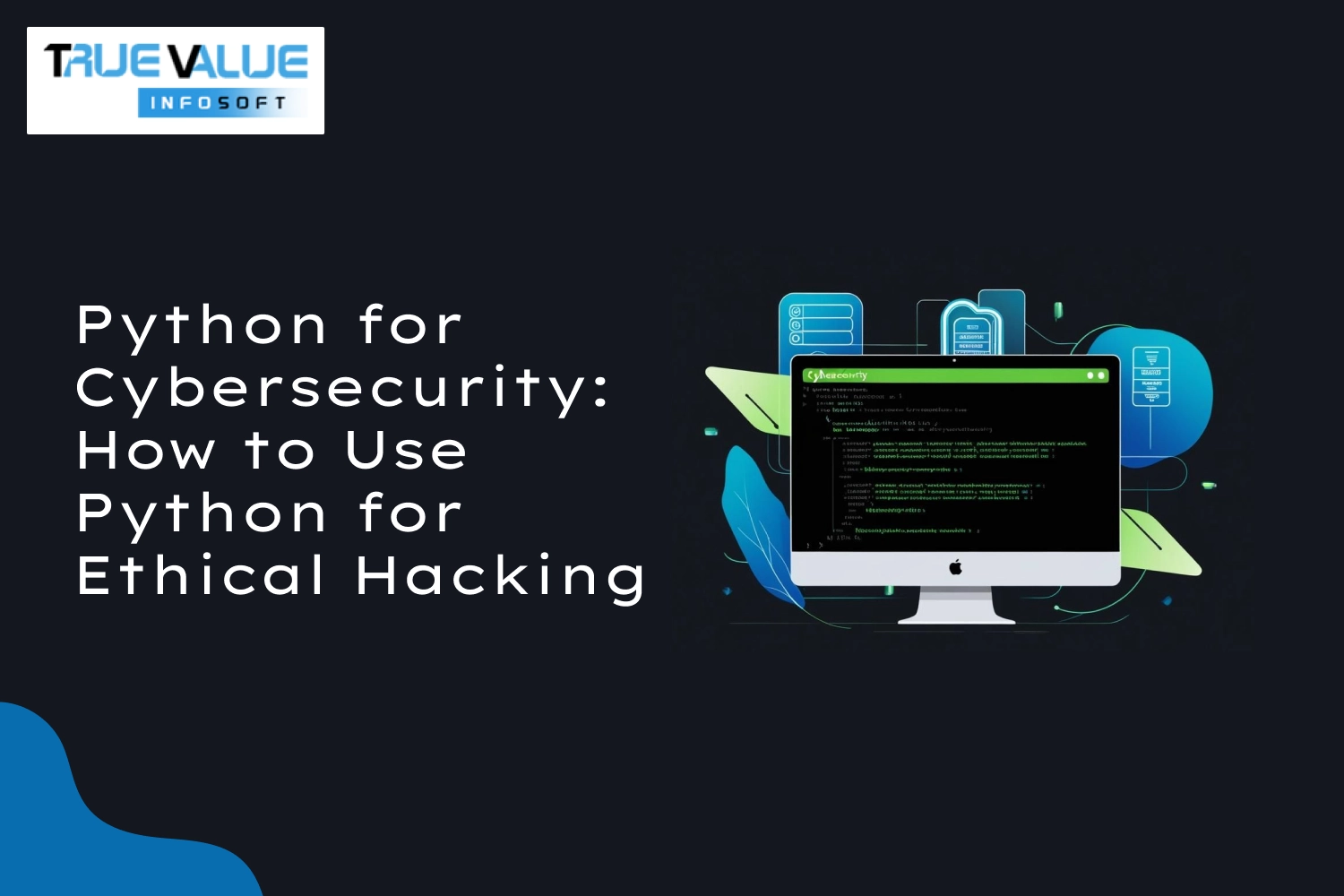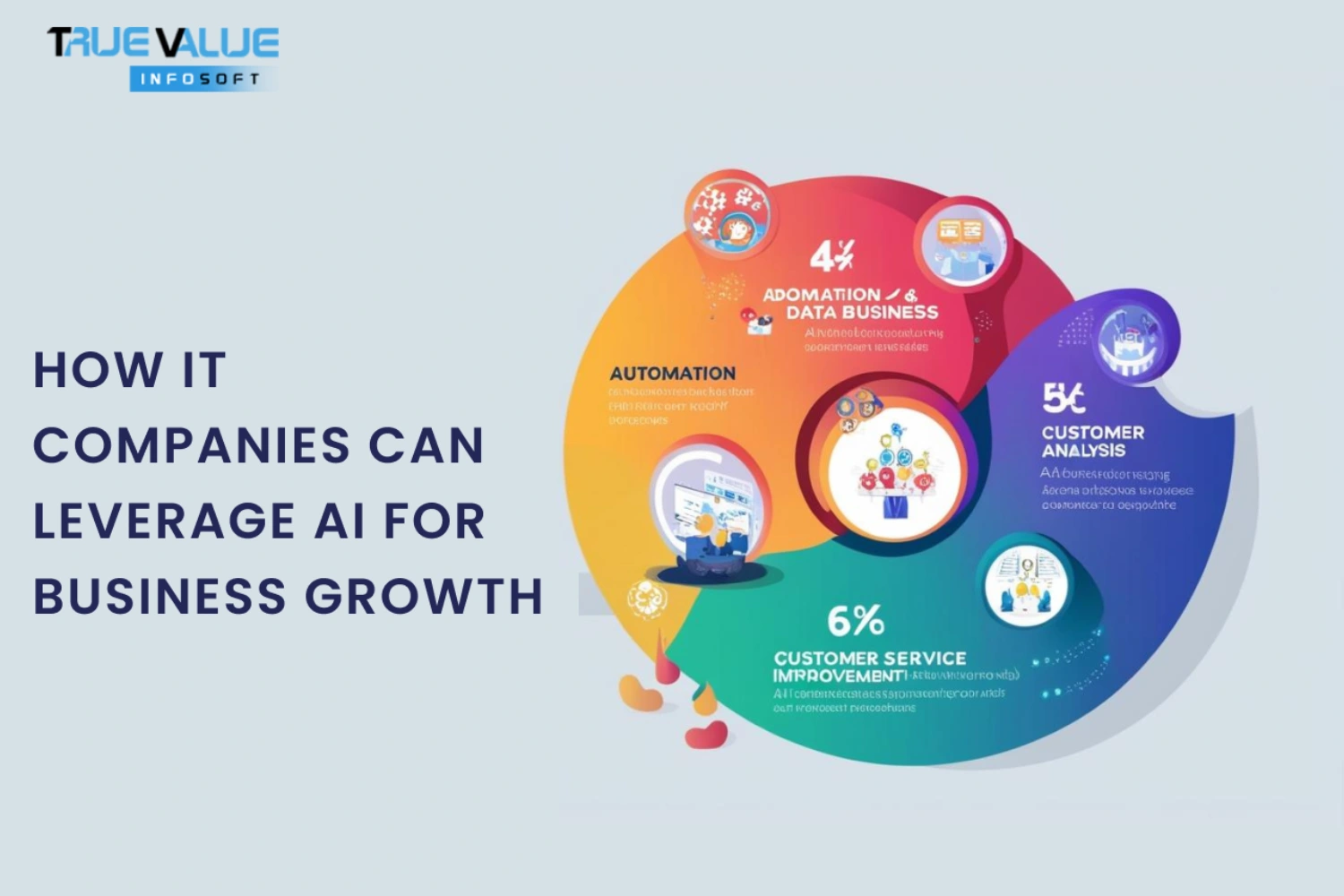Introduction
Have you ever wondered why some SaaS applications run seamlessly while others lag, crash, or frustrate users? In the fast-paced digital landscape of 2025, performance isn’t just a luxury—it’s a necessity. As users expect lightning-fast response times, uninterrupted access, and smooth functionality across devices, optimizing SaaS performance has become a critical priority for businesses of all sizes.
At True Value Infosoft, the best app development company in India, we understand that delivering high-performing SaaS solutions goes beyond just writing code. It involves strategic planning, cutting-edge technologies, intelligent monitoring, and constant fine-tuning. Whether you’re scaling your SaaS startup or enhancing an enterprise-grade platform, staying ahead of performance trends can give you a competitive edge.
This blog dives deep into the top trends and actionable strategies shaping SaaS performance optimization in 2025. From edge computing and AI-powered monitoring to serverless architecture and multi-cloud deployments, we’ll explore how modern tech stacks and methodologies are revolutionizing the SaaS ecosystem. Whether you're a developer, tech leader, or entrepreneur, these insights will empower you to build faster, more reliable, and future-ready SaaS products that your users will love.
So, let’s explore what it truly takes to optimize your SaaS platform for success in 2025 and beyond.
Understanding SaaS Performance Optimization
What Is SaaS Performance Optimization?
SaaS performance optimization refers to enhancing the speed, responsiveness, and reliability of cloud-based applications. It encompasses server management, front-end efficiency, database optimization, API performance, and real-time monitoring to deliver a seamless experience to users.
Why It Matters in 2025
- User expectations are higher than ever.
- Downtime is costly—financially and in terms of reputation.
- Global scalability requires resilient infrastructure.
- AI, ML, and IoT integrations demand real-time responsiveness.
Key SaaS Performance Metrics to Track
Performance metrics allow you to measure success and identify bottlenecks. In 2025, these are the most critical KPIs to monitor:
- Uptime/Downtime – Aim for 99.99% availability.
- Page Load Time – Ideally under 2 seconds.
- API Latency – Keep under 100ms if possible.
- Error Rate – Should be consistently low (<1%).
- Churn Rate – Reflects impact of poor performance.
- Conversion Rate – Can directly correlate with performance.
Top SaaS Performance Trends for 2025
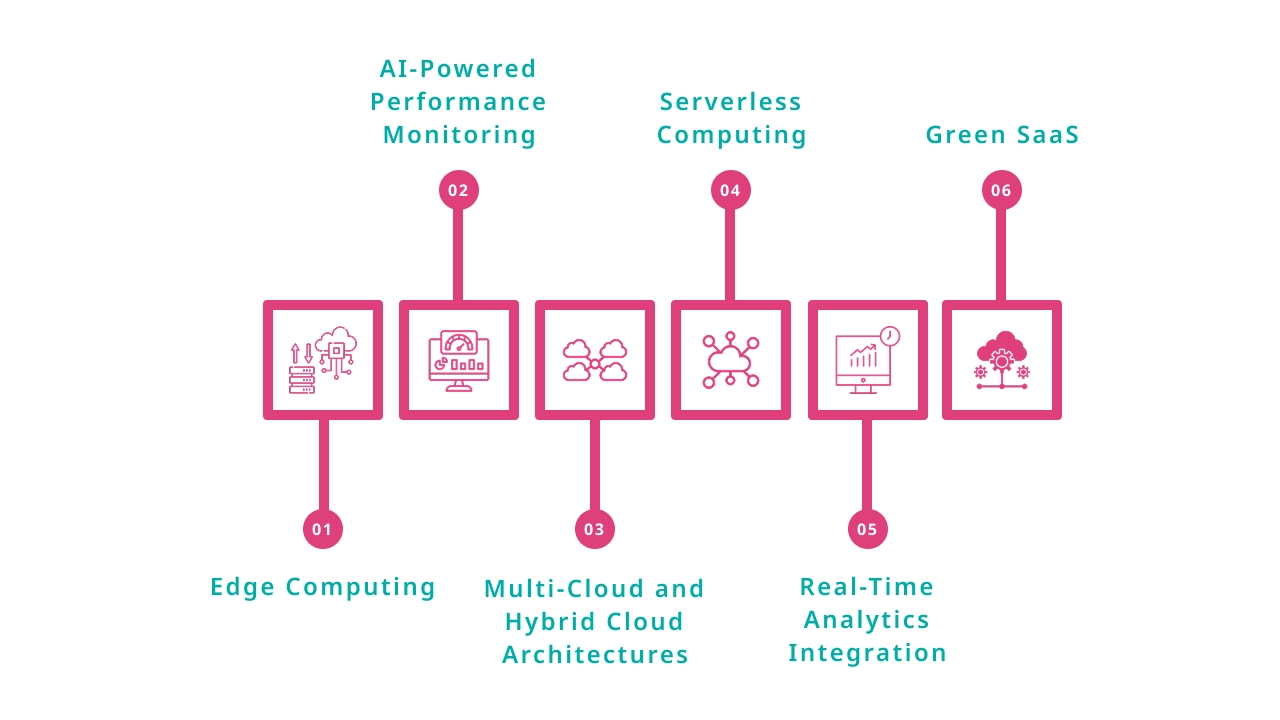
1. Edge Computing
Edge computing is reducing latency by processing data closer to users. SaaS providers now deploy micro data centers globally to ensure lightning-fast response times.
2. AI-Powered Performance Monitoring
AI is being integrated into monitoring tools for anomaly detection, predictive analytics, and automated responses to system disruptions.
3. Multi-Cloud and Hybrid Cloud Architectures
To mitigate vendor lock-in and optimize regional performance, SaaS companies are spreading workloads across multiple cloud providers.
4. Serverless Computing
Serverless models are gaining traction for scaling functions dynamically without server management—ideal for unpredictable workloads.
5. Real-Time Analytics Integration
As businesses seek real-time insights, SaaS platforms must ensure their data pipelines and dashboards are optimized for speed and accuracy.
6. Green SaaS
Eco-conscious architecture is now a competitive advantage. Performance optimization also includes energy-efficient coding and hosting solutions.
Front-End Performance Optimization Strategies
User-facing performance is critical. These techniques help reduce latency and enhance UX:
1. Use of Progressive Web Apps (PWAs)
PWAs blend the best of web and mobile, providing offline support and faster load times.
2. Code Splitting
Only deliver what's needed for the initial view to reduce bundle size and improve loading speed.
3. Lazy Loading
Images and components load only when visible in the viewport, reducing initial load strain.
4. Caching and CDN Use
Leverage browser caching and CDNs like Cloudflare or Akamai to serve assets from nearby servers.
5. Responsive UI/UX
Ensure fast rendering on all devices and screen sizes, using lightweight libraries and frameworks like Svelte or React with optimized builds.
Back-End Performance Optimization Strategies
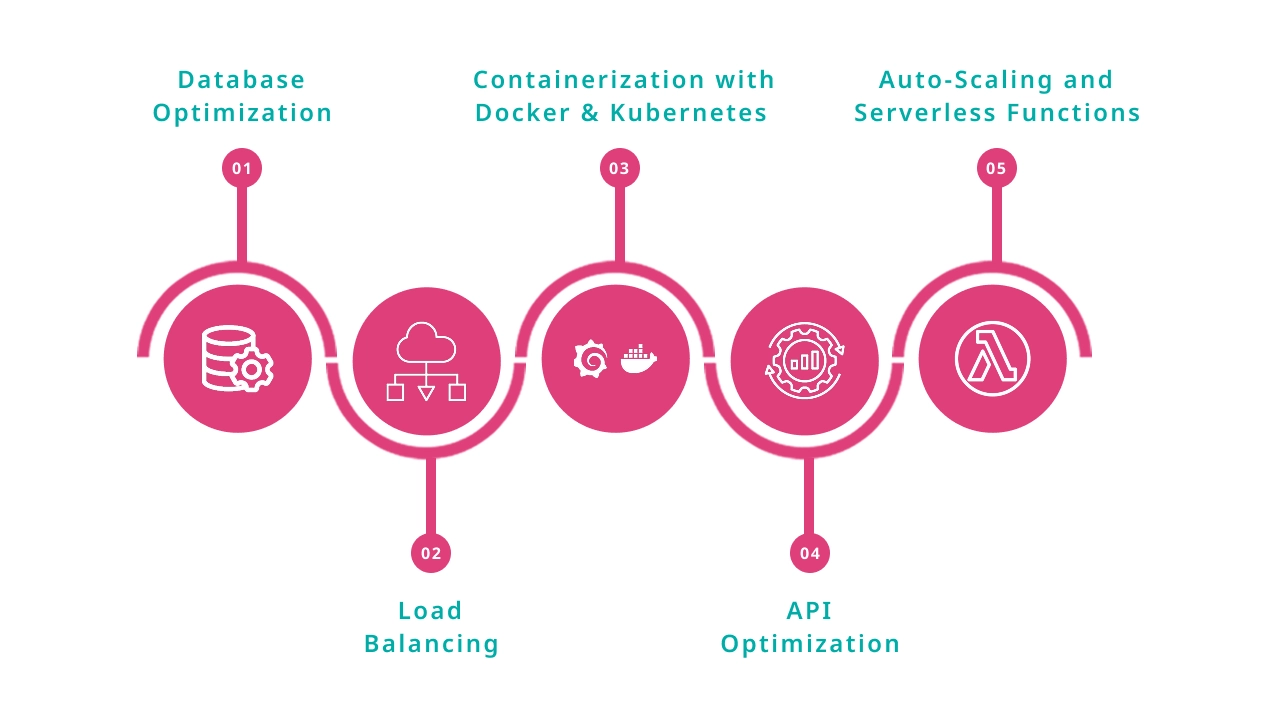
A well-optimized back end is crucial to SaaS success.
1. Database Optimization
Use indexing, query optimization, and caching mechanisms like Redis or Memcached to reduce response times.
2. Load Balancing
Distribute traffic evenly across multiple servers to avoid overload.
3. Containerization with Docker & Kubernetes
Containers ensure consistency across environments, while Kubernetes handles orchestration and scaling.
4. API Optimization
Use REST or GraphQL efficiently. Compress payloads, paginate large data sets, and implement rate-limiting.
5. Auto-Scaling and Serverless Functions
Auto-scale infrastructure based on traffic patterns. Tools like AWS Lambda, Azure Functions, or Google Cloud Run are essential.
Database and Storage Optimization
1. Cloud-Native Databases
Cloud-native options like Amazon Aurora, Google Spanner, or FaunaDB offer scalability and reliability.
2. Data Archiving and Purging
Reduce query times by archiving or purging old, irrelevant data.
3. Read/Write Splitting
Separate read and write operations across database replicas to reduce load on primary databases.
Application Security and Performance
Performance and security go hand-in-hand. Here's how to balance them:
1. Secure API Gateways
APIs should be protected via tokens, throttling, and secure gateways.
2. Web Application Firewalls (WAFs)
WAFs block malicious traffic before it affects performance.
3. DDoS Protection
Use services like Cloudflare, AWS Shield, or Azure DDoS Protection to stay resilient under attack.
Monitoring & Observability Tools in 2025
Real-time monitoring tools help ensure smooth SaaS performance:
- Datadog – Full-stack observability with AI.
- New Relic – Deep diagnostics across application stacks.
- Prometheus + Grafana – Ideal for Kubernetes and container monitoring.
- AppDynamics – Best for enterprise-level SaaS.
- OpenTelemetry – Emerging open standard for distributed tracing.
Set up real-time alerts, automated incident responses, and dashboards for proactive management.
DevOps, CI/CD & SaaS Performance
1. CI/CD Pipelines
Automate testing and deployment to catch issues early. Tools: Jenkins, GitLab CI/CD, CircleCI.
2. Canary Deployments
Gradually roll out changes to a small user segment to minimize risk.
3. Infrastructure as Code (IaC)
Use tools like Terraform or Pulumi to standardize infrastructure setup, making performance replicable and scalable.
AI & ML for SaaS Optimization
AI isn't just a trend—it’s revolutionizing SaaS performance:
1. Predictive Scaling
AI models predict traffic spikes and scale infrastructure preemptively.
2. Anomaly Detection
Machine learning detects unusual patterns faster than traditional logs.
3. Personalized User Experiences
Real-time AI optimization tailors features and content, improving perceived performance and engagement.
Future-Proofing Your SaaS Architecture
To stay competitive in 2025 and beyond:
1. Design for Modularity
Microservices and modular components allow agile scaling and feature releases.
2. Focus on Interoperability
Ensure easy integration with other tools via APIs and SDKs.
3. Embrace the Composability Movement
Use composable architecture to quickly assemble custom solutions from modular blocks.
Case Studies: SaaS Performance Optimization Wins
1. Slack
By reducing front-end bundle sizes and optimizing WebSocket connections, Slack improved performance for enterprise clients.
2. Shopify
Shopify integrated edge functions and GraphQL optimization, improving store load times and boosting sales.
3. Netflix
Their migration to serverless and AI-powered analytics drastically improved uptime and content delivery speed.
Challenges in Optimizing SaaS Performance
Even with the best strategies, challenges remain:
- Data Gravity – Moving data across regions can slow things down.
- Vendor Lock-in – Relying on one cloud provider can limit optimization.
- Legacy Systems – Older architectures can be hard to refactor.
- Scaling Costs – Optimizing performance without ballooning costs is a delicate balance.
Why Choose True Value Infosoft for App Development?
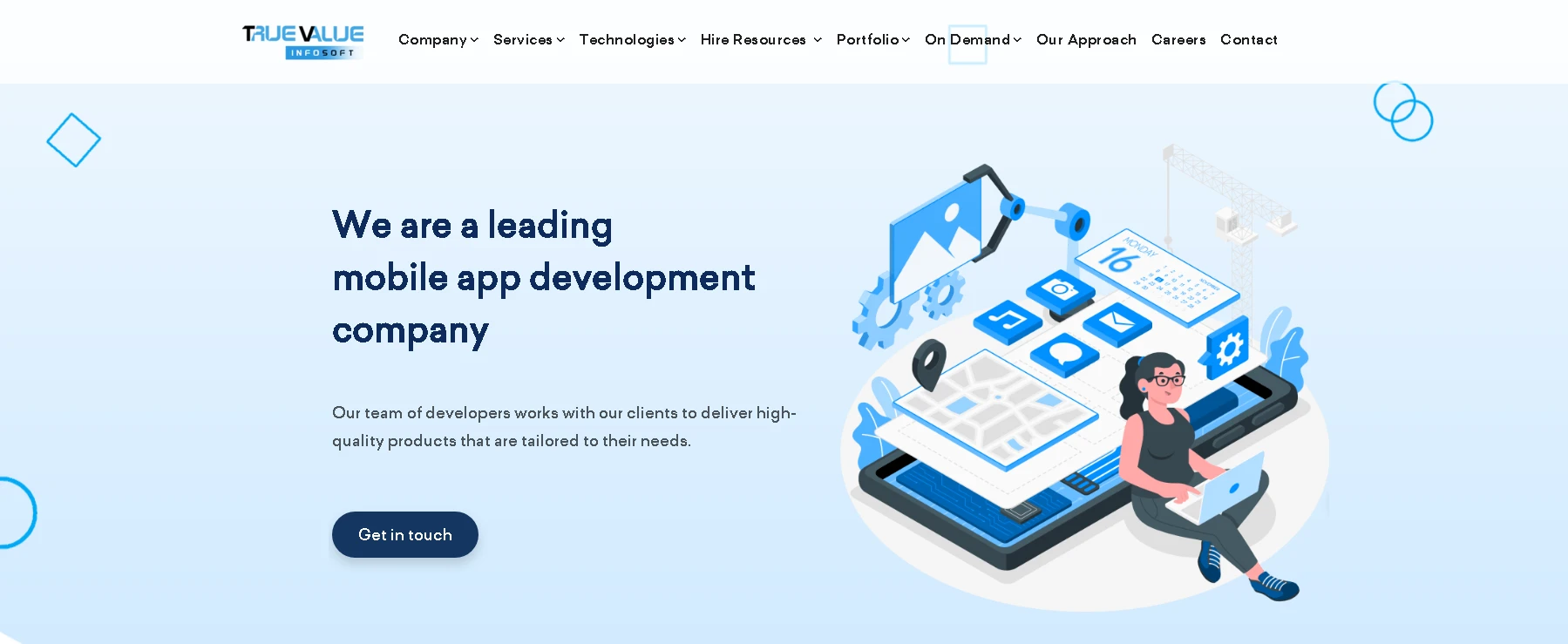
Choosing the right development partner is crucial for building a successful and scalable app. Here’s why True Value Infosoft, the top app development company in India, should be your first choice:
- Proven Expertise: With years of experience in developing custom mobile and web applications, we bring deep technical knowledge and industry insights to every project.
- Full-Stack Development: From front-end design to back-end architecture and database management, we offer end-to-end solutions tailored to your business needs.
- Client-Centric Approach: We prioritize your goals, listen carefully, and collaborate closely to deliver an app that reflects your vision and meets your expectations.
- Cutting-Edge Technology: Our developers stay ahead of the curve with the latest tools and frameworks, including React Native, Flutter, Node.js, and more.
- Agile Development Methodology: We follow agile practices to ensure flexibility, faster delivery, and continuous improvement throughout the project lifecycle.
- Post-Launch Support: Our commitment doesn’t end at deployment—we offer maintenance, updates, and performance optimization for long-term success.
- Affordable & Transparent Pricing: Get high-quality app development without hidden costs, with pricing models that suit startups and enterprises alike.
Partner with True Value Infosoft and turn your app idea into a powerful, high-performing digital product.
Conclusion
SaaS performance optimization is no longer optional—it’s a necessity. With user expectations at an all-time high and competition growing fiercer by the day, only those who proactively enhance their platforms will thrive in 2025.
From edge computing and serverless architectures to AI-powered analytics and modular designs, the path forward is clear but challenging. With the right strategies and a reliable technology partner like True Value Infosoft, you can lead the pack in performance, user satisfaction, and business growth.
FAQs
Use tools like New Relic, Datadog, and Prometheus to monitor KPIs like latency, uptime, error rates, and user engagement in real time.
Edge computing and AI-based predictive optimization are the top trends shaping performance strategies this year.
Serverless allows automatic scaling, reduced costs, and lower latency by executing functions only when needed, improving responsiveness.
Use multi-cloud setups, auto-scaling, real-time monitoring, and automated failovers to minimize downtime risks.
Absolutely! We offer comprehensive SaaS development and performance optimization services tailored to your goals and technology stack.
